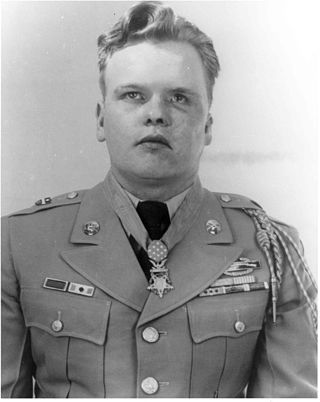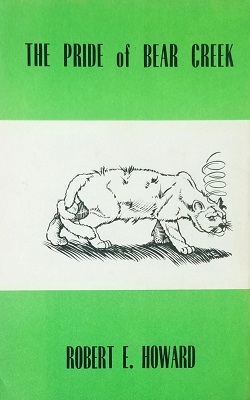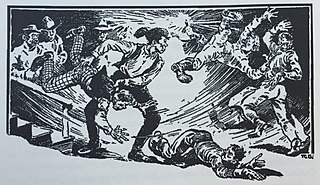
The Sand Creek massacre was a massacre of Cheyenne and Arapaho people by the U.S. Army in the American Indian Wars that occurred on November 29, 1864, when a 675-man force of the Third Colorado Cavalry under the command of U.S. Volunteers Colonel John Chivington attacked and destroyed a village of Cheyenne and Arapaho people in southeastern Colorado Territory, killing and mutilating an estimated 69 to over 600 Native American people. Chivington claimed 500 to 600 warriors were killed. However, most sources estimate around 150 people were killed, about two-thirds of whom were women and children. The location has been designated the Sand Creek Massacre National Historic Site and is administered by the National Park Service. The massacre is considered part of a series of events known as the Colorado Wars.
The Marias Massacre was a massacre of Piegan Blackfeet Native peoples which was committed by the United States Army as part of the Indian Wars. The massacre took place on January 23, 1870, in Montana Territory. Approximately 200 Native people were killed, most of whom were women, children and elderly men.

The Hatfield–McCoy feud, also described by journalists as the Hatfield–McCoy conflict, involved two rural American families of the West Virginia–Kentucky area along the Tug Fork of the Big Sandy River in the years 1863–1891. The Hatfields of West Virginia were led by William Anderson "Devil Anse" Hatfield, while the McCoys of Kentucky were under the leadership of Randolph "Ole Ran'l" McCoy. Those involved in the feud were descended from Joseph Hatfield and William McCoy (born c. 1750). The feud has entered the American folklore lexicon as a metonym for any bitterly feuding rival parties.

Hugh Glass was an American frontiersman, fur trapper, trader, hunter and explorer. He is best known for his story of survival and forgiveness after being left for dead by companions when he was mauled by a grizzly bear.

G-Unit was an American hip hop group formed by longtime friends and East Coast rappers 50 Cent, Tony Yayo, and Lloyd Banks. After amassing a string of self-released mixtapes in the early 2000s, the group released their debut album Beg for Mercy in 2003, which went on to ship over four million copies in the US and was certified quadruple platinum by the Recording Industry Association of America (RIAA).

Branded is an American Western series that aired on NBC from 1965 through 1966. It was sponsored by Procter & Gamble in its Sunday night, 8:30 p.m. Eastern time period. The series is set in the Old West, following the end of the American Civil War. The show starred Chuck Connors as Jason McCord, a United States Army cavalry captain who had been court-martialed and drummed out of the service following an unjust accusation of cowardice.

Thomas Horn Jr., was an American scout, cowboy, soldier, range detective, and Pinkerton agent in the 19th-century and early 20th-century American Old West. Believed to have committed 17 killings as a hired gunman throughout the West, Horn was convicted in 1902 of the murder of 14-year-old Willie Nickell near Iron Mountain, Wyoming. Willie was the son of sheep rancher Kels Nickell, who had been involved in a range feud with neighbor and cattle rancher Jim Miller. On the day before his 43rd birthday, Horn was executed by hanging in Cheyenne, Wyoming.
Donald M. Grant, Publisher, Inc. is a fantasy and science fiction small press publisher in New Hampshire that was founded in 1964. It is notable for publishing fantasy and horror novels with lavish illustrations, most notably Stephen King's The Dark Tower series and the King/Peter Straub novel The Talisman.

Bloody Knife was an American Indian who served as a scout and guide for the U.S. 7th Cavalry Regiment. He was the favorite scout of Lieutenant Colonel George Armstrong Custer and has been called "perhaps the most famous Native American scout to serve the U.S. Army."
The baobhan sith is a female fairy in the folklore of the Scottish Highlands, though they also share certain characteristics in common with the succubus. They appear as beautiful women who seduce their victims before attacking them and killing them.

Einar Harold Ingman Jr. was a United States Army soldier who received the Medal of Honor for his actions during the Third Battle of Wonju in the Korean War.

The French–Eversole feud occurred primarily from 1887–1894. The events occurred in the mountains of southeastern Kentucky and were mainly situated in Hazard, Perry County. The two instigators of this feud were Joseph C. Eversole and Benjamin Fulton French, who were both merchants and lawyers and at one time were friendly. The war or feud was a media sensation and was covered by many US papers at the time. The First report was in the Louisville Courier-Journal on June 30, 1886 on Page 1. A listing of the various media reports is included at the end of this article. Ultimately, those media reports became the basis for various books written about the French-Eversole War.
Jonas Poole was an early 17th-century English explorer and sealer, and was significant in the history of whaling.

The Pride of Bear Creek is a collection of Western short stories by Robert E. Howard. It was first published in 1966 by Donald M. Grant, Publisher, Inc. Grant also published an edition in 1977 with illustrations by Tim Kirk.

Mayhem on Bear Creek is a collection of Western short stories by Robert E. Howard. It was first published in 1979 by Donald M. Grant, Publisher, Inc. in an edition of 1,900 copies. The stories had not previously been collected.
Tsali, originally of Coosawattee Town (Kusawatiyi), was a noted leader of the Cherokee during two different periods of the history of the tribe. As a young man, he followed the Chickamauga Cherokee war chief, Dragging Canoe, from the time the latter migrated southwest during the Cherokee–American wars. In 1812 he became known as a prophet, urging the Cherokee to ally with the Shawnee Tecumseh in war against the Americans.

The Massacre Canyon battle took place in Nebraska on August 5, 1873 near the Republican River. It was one of the last hostilities between the Pawnee and the Sioux and the last battle/massacre between Great Plains Indians in North America. The massacre occurred when a large Oglala/Brulé Sioux war party of over 1,500 warriors led by Two Strike, Little Wound, and Spotted Tail attacked a band of Pawnee during their summer buffalo hunt. In the ensuing rout, more than 150 Pawnees were killed. The victims, who were mostly women and children, suffered mutilation and some were set on fire.

Feuds in the United States deals with the phenomena of historic blood feuding in the United States. These feuds have been numerous and some became quite vicious. Often, a conflict which may have started out as a rivalry between two individuals or families became further escalated into a clan-wide feud or a range war, involving dozens—or even hundreds—of participants. Below are listed some of the most notable blood feuds in United States history, most of which occurred in the Old West.

The Bathurst War (1824), was a war between the Wiradjuri nation and the United Kingdom of Great Britain and Ireland. Following the successful Blaxland, Lawson, and Wentworth expedition to find a route through the "impenetrable" Blue Mountains in 1813, this allowed the colony to expand onto the vast fertile plains of the west.

Breckinridge Elkins is a fictional character created by pulp writer Robert E. Howard. He was featured in twenty-six humorous Western short stories, most of which originally appeared in the pages of Action Stories between 1934 and 1937, as well as the novel A Gent from Bear Creek.















